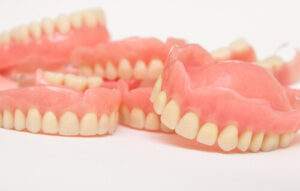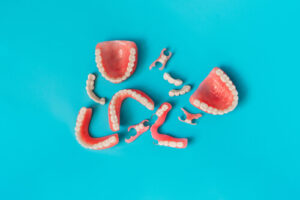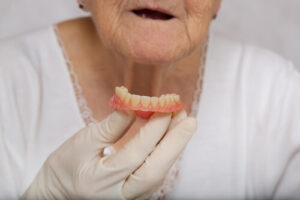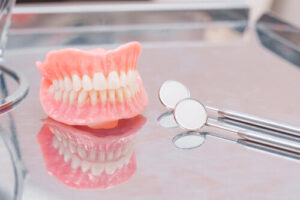Flexible Partial Denture Upper Front Teeth: Aesthetic and Functional Solutions
If you’re considering replacing missing or upper front teeth, a flexible partial denture may offer the perfect blend of aesthetics and functionality. The flexible partial denture upper front teeth is a solution that seamlessly integrates with your natural teeth and promises enhanced comfort and a more natural appearance. This article will delve into how these lightweight yet durable prosthetics can transform your smile and improve your oral health, all while maintaining a look that feels and looks natural. Join us as we explore the benefits and considerations of choosing a flexible partial denture for your upper front teeth.
The Basics of Flexible Partial Dentures for Upper Front Teeth

Flexible, removable partial dentures for upper front teeth represent a modern solution for those looking to replace missing teeth without the invasiveness of dental implants or the rigidity of traditional dentures. This type of prosthetic is designed to blend seamlessly with your natural teeth, offering aesthetic and functional benefits.
Material Benefits: Flexible partial dentures are made from a lightweight, thermoplastic material that adapts to the contours of your mouth, providing a comfortable fit that traditional acrylic dentures may not offer.
Aesthetic Appeal: Flexible partial dentures are highly customizable in color, shape, and fit, allowing them to mimic the natural appearance of gums and teeth closely. This makes them particularly suitable for the visible upper front teeth, where a natural look is crucial.
Functionality: These dentures improve your ability to chew and speak more naturally than traditional dentures. Their flexibility allows them to engage positively with the underlying gum and bone structure, distributing biting forces more naturally and reducing the risk of further oral health issues.
Durability and Hygiene: Flexible partial dentures’ non-porous material resists staining and odor, making them easier to maintain than other denture types. Thanks to their impact-resistant nature, they are also less likely to break if dropped.
Ease of Use: Unlike fixed solutions, flexible partial dentures are removable, simplifying cleaning and maintenance. They typically do not require adhesives to stay in place, relying instead on natural suction and fit.
Advantages of Flexible Partial Dentures Over Traditional Options
Flexible partial dentures offer several advantages over traditional ones, particularly regarding comfort, aesthetics, and usability. Here’s a detailed look at why many patients and dentists prefer flexible partial dentures:
Enhanced Comfort
Flexible partial dentures are made from softer, more pliable materials such as nylon or other thermoplastic polymers, which are less rigid than the acrylic used in traditional dentures. This flexibility allows the denture to adapt to the natural contours of the mouth, reducing irritation and discomfort often with wearing partial dentures with harder, less forgiving materials.
Improved Aesthetics
Traditional full dentures often require metal clasps to secure them in place, which can be visible when speaking or smiling. On the other hand, flexible partial dentures use gum-colored or no clasps at all, blending more seamlessly with natural teeth and enhancing the overall appearance. This benefits upper front teeth, where visible hardware can detract from the smile.
Less Adjustment Time
Due to their softer and more adaptable nature, flexible partial dentures require less adjusting time. Patients often report a quicker adaptation period, with less initial speech and chewing disruption than traditional dentures.
Durability and Break Resistance
While traditional acrylic dentures can be brittle and prone to breaking if dropped, flexible partial dentures are more impact-resistant. This durability makes them more reliable and less risky for everyday use.
Hypoallergenic Properties
Flexible partial dentures offer a hypoallergenic alternative for patients sensitive to traditional denture materials. The materials used in flexible lower partial dentures do not include monomers and other chemicals commonly found in standard dentures, reducing the risk of allergic reactions.
Ease of Maintenance
Flexible partial dentures are easier to clean and maintain due to their non-porous structure, which does not absorb liquids or odors. This simplicity in maintenance helps enhance oral hygiene and extends the life of the denture.
Design and Material Considerations for Upper Front Teeth

Several factors and critical considerations ensure the end product is functional and aesthetically pleasing when designing and choosing materials for flexible partial dentures, especially for upper front teeth. Here’s what goes into the decision-making process:
Material Flexibility and Strength: The materials used for upper front teeth must strike a balance between flexibility and strength. While the denture’s flexibility allows for a comfortable fit and adaptability to mouth movements, it must also be strong enough to handle the mechanical forces of biting and chewing without deforming or breaking.
Aesthetic Matching: The appearance of the denture is paramount for the highly visible upper front teeth. Materials should be chosen for their ability to mimic the translucency and gloss of natural teeth. Advanced composite materials and high-quality nylon can create a natural-looking finish that blends seamlessly with the surrounding teeth.
Color Stability: The material should have excellent color stability to avoid discoloration over time. This is important for maintaining the denture’s aesthetic appeal, as upper front teeth are constantly exposed to various pigments from food and drinks.
Biocompatibility: Since the denture constantly contacts oral tissues, the material must be biocompatible and non-irritating. Hypoallergenic materials that do not provoke allergic reactions or contain harmful chemicals are essential to ensure the health and comfort of the wearer.
Weight and Thickness: The design should consider the weight and thickness of the material, aiming for the lightest and thinnest possible configuration that does not compromise on strength. A lighter denture prevents strain on existing teeth and the jaw, while a thinner profile allows for a more natural mouthfeel and appearance.
Attachment Techniques: It is crucial to consider how the denture will attach to the remaining teeth. For upper front teeth, discreet clasps that are colored to match the gums or completely hidden can improve the overall aesthetic. Flexible dentures often use special clasps that wrap around the remaining natural teeth without causing damage or aesthetic disruption.
Installation Process: What to Expect During Fitting

The installation process for flexible partial dentures, particularly for upper front teeth, involves several steps to ensure a precise fit and optimal comfort. Understanding what to expect during the fitting can help patients feel more prepared and confident about the procedure. Here’s a detailed breakdown of the installation process:
Initial Consultation: The process begins with a thorough consultation, during which the dentist evaluates the patient’s oral health, discusses the patient’s needs for dental care, and determines the suitability of flexible partial dentures. This appointment may include taking a medical history to check for any conditions affecting treatment.
Dental Impressions: Accurate impressions of the patient’s teeth and gums are essential for creating a denture that fits perfectly. The dentist uses a dental putty or a digital scanner to capture the shape and arrangement of the existing teeth and the gum line. This impression is then used to fabricate the denture in a dental lab.
Bite Registration: This step involves determining the position of the upper and lower teeth when the mouth is closed to ensure that the dentures align correctly with the opposite, upper or lower arch of teeth, providing a proper bite.
Denture Fabrication: The impressions and bite registration are sent to a dental laboratory where the flexible partial denture is custom-made. The materials used are chosen based on their cost and ability to provide the desired aesthetics and functionality, as previously discussed with the patient.
Fitting Appointment: Once the denture is ready, the patient returns for a fitting appointment. During this visit, the dentist will place the denture to check its fit, comfort, and appearance. Adjustments can be made at this stage to ensure the denture fits snugly without causing discomfort or altering the bite.
Adjustment Period: After the initial fitting, there may be a brief adjustment period during which the patient gets used to the new denture. It’s normal to experience minor irritation or discomfort as the mouth adjusts to the dentures. The dentist might schedule follow-up visits to make further adjustments and ensure the denture functions well.
Care Instructions: Finally, the dentist will provide instructions on how to care for the new dentures, including how to clean them, handle them properly, and recognize signs they might need adjustment.
Maintenance Tips for Your Flexible Partial Denture

Maintaining your flexible partial denture is crucial for ensuring its longevity and effectiveness. Proper care helps keep your upper partial denture in top condition and supports oral health. Here are some essential maintenance tips for your flexible partial denture, especially for those used in replacing upper front teeth:
Daily Cleaning
It’s vital to clean your denture daily. Use a soft-bristled brush designed specifically for dentures, not a regular toothbrush, which may be too harsh. Clean it over a sink filled with water or a folded towel to avoid damage if dropped. Avoid using regular toothpaste, as its abrasive nature can create micro-scratches where bacteria can accumulate. Instead, use a cleaner specifically formulated for dentures.
Rinse After Eating
Rinse your denture under warm (not hot) water after every meal to remove food particles and other debris. This helps prevent staining and bacteria buildup.
Soak Overnight
Most flexible partial dentures need to stay moist to maintain their shape. Soak them overnight in an appropriate denture-cleansing solution. This helps clean the denture and ensures it remains pliable and retains its shape.
Handle with Care
When handling your denture, be gentle. Bending or twisting it could change its shape or even break it. Always hold the denture by the base, not the clasps, to avoid damaging them.
Avoid Harsh Chemicals
Never use bleach or harsh chemicals to clean your dentures. These can weaken the denture material and lead to discoloration. Also, avoid hot or boiling water, which can warp the denture.
Regular Dental Check-Ups
Visit your dentist regularly, not just for your natural teeth but also to check your dentures. Your dentist can ensure that it still fits correctly and check for signs of wear or damage. If necessary, adjustments can be made to fixed dentures to ensure continued comfort and functionality.
Keep Your Mouth Healthy
Proper oral hygiene is essential when wearing dentures. Brush your gums, tongue, and roof of your mouth every morning before you insert them. This stimulates circulation in your tissues and helps remove plaque.
Be Mindful of Staining Substances
Just as tooth decay, like natural teeth, dentures can become stained. Avoid frequently consuming high-stain foods and drinks like coffee, tea, red wine, and berries. If you consume these, rinse your mouth and the denture soon afterward.
Choosing a flexible partial denture for your upper front teeth can be a transformative decision for your smile and oral functionality. These upper partial dentures offer a comfortable, aesthetic, and practical solution for those looking to replace missing teeth without the invasiveness of surgery. With proper care and maintenance, a flexible partial denture can provide a long-lasting and satisfying enhancement to your dental health and personal confidence.
References
The Pros and Cons of Flexible Dentures
https://www.dentureliving.com/en-us/advice-tips/types-of-dentures/partials/flexible-dentures
Flexilytes Flexible Dentures
https://www.aspendental.com/dentures/types-of-dentures/partial-dentures/flexilytes/
Flexible denture base material
https://www.ncbi.nlm.nih.gov/pmc/articles/PMC3276859/
Flexible Partial Dentures -A Hope for the Challenged Mouth
https://www.researchgate.net/publication/352092016_Flexible_Partial_Dentures_-A_hope_for_the_Challenged_Mouth
Flexible Partial Dentures
https://www.pjsr.org/July12_pdf/14.%20G.K.%20Thakral.pdf

